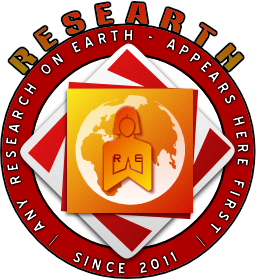Social and Economic Sustainability Analysis of Rural Settlements Located in the Hazard-Prone Areas
Case Study: Villages Surrounding the City of Sanandaj
DOI:
https://doi.org/10.51611/iars.irj.v5i2.2015.52Keywords:
Sociology, Rural Development, Economic SustainabilityAbstract
This study is aimed at analyzing economic and social sustainability of rural settlements in the hazard – prone zones. Accordingly, the present descriptive – analytical study with emphasizing on its practical aspect is trying to identify high risk zones to locate the villages surrounding the Sanandaj City using Geography Information System (GIS) and Analytic Hierarchy Process (AHP). In this regard, for zoning of hazard – prone areas, information layers such as distance from the fault, gradient layer, height layer, distance from the river, landslide layer, and soil type layer were created utilizing the information existent in the database of GIS at Sanandaj Municipality. Finally, hazard – prone zones were identified by applying the technique in ARCGIS10 and its practical functions and algorithms. In the next step, the layers of villages surrounding Sanandaj City were adapted to the prioritized zones and so the villages (Salavat Abad, Dolat Abad, Gazar Dareh, Khalijan, Issa Dar, Hassan Abad) which are located in hazard – prone zoning, were identified. To assess the socio – economic conditions of these villages are used FTOPSIS technique. The studied samples were two Councils members in each village which were selected randomly to survey and to achieve the goal of research. The results showed that economical aspect of the indicator (rural road networks), with ID = E5, and social aspect of the indicator (health facilities), with ID = E8 gained the lowest weights in the minimum, average and maximum fuzzy criterion, and also the indictor of rural power network and its backup services, with ID = E1, and taking care of villages with cultural and historical monuments gained the highest weights in the minimum, average and maximum fuzzy criterion.
Downloads
References
Ataee, M. (2011), Multi – criteria fuzzy decision making, Publication of Shahrood Industrial University
Burger, Dietrich (1997), The political and social dimension of sustainable development. Presentation to the Workshop Sustainable development – Yeguare program,. Available on: http://www.cefe.net.
Cornelissen. A.M.G, Berg van den, Koops.W.J,Grossman. M,Udoa .H.M.J, Assessment of the contribution of sustainability indicators to sustainable development: a novel approach using fuzzy set theory, Agriculture, Ecosystems and Environment 86 (2001) 173–185.
Finland's Ministry of the Environment. (2007), Existing Assessment Tools and Indicators:
Greenwood J. ,(1999), Interpretations of Sustainable Agriculture in a Canadian Context, in Bryant, R. and Marois, C. (eds), The Sustainability of Rural Systems, 68-76, University of Montreal Montreal.
Husseini, A. & Veisi R. & Mohammadi M. (2010), Geographical zoning of restrictions of physical development of Rasht City using GIS, The fourth Conference on Planning and Urban Management, Mashhad, Iran.
Hussein Zadeh Dalir, K. Hushyar, H. et. al, (2006), Influential views, factors and elements in physical development of Iran's cities, Journal of Geography and Regional Development, N. 6.
Korenecki Veno (2005), Rural residential landuse strategy
Kalantari Kh. (2008), Planning and regional development (theories and techniques), Khoshbin Publication, Tehran, Iran. Mose, Tun Lin and Pathranakul, Pairote(2006), an integrated approach to natural disaster prevention and management, vol 15, No 3, Emerald group publishing
Pur Taheri, M & Rukn al-Din Eftekhari A. & Badri, A. (2011), Strategies and policies of physical development of rural settlements with an emphasis on international and domestic experiences, Publication of Islamic Revolution Housing Foundation (Bonyad-e Maskan), 1st edition, Tehran, Iran.
Mose, Tun Lin and Pathranakul, Pairote (2006), an integrated approach to natural disaster prevention and management, vol 15, No 3, Emerald group publishing
Torjman, Sherri (2000), The social dimension of sustainable development Caledon: Institute of social policy. Available on: www.caledoninst.org
Lock, David. (2003), Planning for Sustainable Communities in Urban villages and the making of communities. London: Spon Press.
Qasemi Barfi, R. (2006), Management and organization of human forces in unexpected events, Second International Conference on Disaster Management, Tehran, Iran.
Zadeh, L., (1965). Fuzzy sets. Information and Control, 8, 38-53.
Downloads
Published
Issue
Section
License
Copyright (c) 2015 H. Kuhestani Eynul-din, Atefe Ahmadi, S. Ahmadi

This work is licensed under a Creative Commons Attribution 4.0 International License.
Author(s) hold complete right on the content of this article. Copyright to the content are governed as per Copyright Policy of the Journal.





















